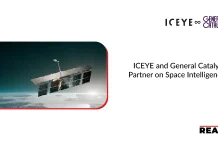GITAI USA Inc. (GITAI), the world’s leading space robotics startup, is pleased to announce that GITAI’s Inchworm-type Robot Arm has successfully passed all tests and achieved Technology Readiness Level 6 (TRL6) following an integrated test conducted in a thermal vacuum chamber simulating the lunar South Pole environment.
To reduce the cost of space operations by 100 times, GITAI is developing robotic satellites for on-orbit services, lunar robotic rovers for infrastructure construction, and inchworm-type robotic arms that can be used in both areas. All of these technologies are being developed in-house.
As the final stage of our lunar environment testing, we conducted an integrated test of the GITAI Inchworm-type Robot Arm in a thermal vacuum chamber simulating the lunar South Pole.
During the test, the GITAI Inchworm-type Robot Arm operated continuously, simulating extreme temperature variations from the intense cold of permanently shadowed regions to the warmer temperatures experienced during lunar daytime.
Power was primarily supplied by four wireless power transmission systems installed around the chamber. At the lowest temperatures, the environment reached -140℃, and the vacuum level was less than 1E-5 Torr. We also tested the robot’s ability to operate solely on battery power in the event of a power failure.
Also Read: goTenna and EVERYWHERE Communications Unite for Enhanced Connectivity
Even under these extreme conditions, the GITAI Inchworm-type Robot Arm successfully performed continuous inchworm-type locomotion for 29 hours, covering a distance of approximately one mile (1,503 steps).
Additionally, we conducted an experiment simulating the docking of a target satellite for on-orbit servicing. The robot arm successfully attached a dedicated end effector using its tool changer function and captured the target satellite’s separation ring.
Through these integrated tests in the thermal vacuum chamber simulating the lunar South Pole, the GITAI Inchworm-type Robot Arm has now reached TRL6.
Moreover, GITAI’s S2 robotic arm, which was successfully demonstrated outside the ISS earlier this year, has already achieved TRL7. Since the Inchworm-type Robot Arm shares 80% of its core components with the S2 robotic arm, it is also considered TRL7 for low-Earth orbit operations.
GITAI will continue to improve the TRL of its products, aiming to carry out a variety of tasks through the provision of on-orbit services and lunar infrastructure construction, with the ultimate goal of reducing the cost of space operations by 100 times.
SOURCE: PRNewswire




